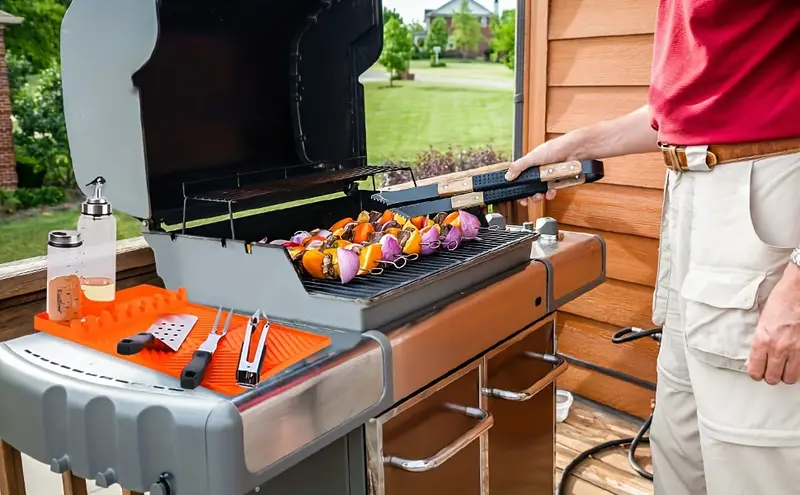
Barbecue enthusiasts, gather around! If you're serious about grilling, mastering the use of a griddle chopper is essential. This versatile tool, often overlooked, can significantly enhance your grilling experience. Whether you're a seasoned pro or a newcomer to the world of BBQ, understanding how to use a griddle chopper effectively will elevate your culinary skills.

Understanding the Griddle Chopper
Before diving into the techniques, it's crucial to understand what a griddle chopper is. This tool is specially designed to handle, flip, and chop food on a griddle surface. Its sharp edge and sturdy handle make it perfect for managing various ingredients, from meats to vegetables, ensuring even cooking and beautiful presentation. For a deeper understanding of how various kitchen tools like the griddle chopper compare, check out the difference between griddle and kitchen spatulas.
Getting Started with Your Griddle Chopper
The first step in mastering the griddle chopper is familiarizing yourself with its parts. Typically, it consists of a wide blade and a robust handle. The blade's width allows for handling larger portions, while its sharpness aids in chopping and scraping the griddle surface. To maintain its efficiency, regular cleaning is essential. For tips on keeping your tools in top shape, visit how to clean a griddle press.
Techniques for Using a Griddle Chopper
Chopping and Flipping
One of the main uses of a griddle chopper is chopping. When grilling, you may want to chop vegetables or dice meats directly on the griddle. The chopper's design makes this process seamless, allowing you to chop with precision. Additionally, its wide blade is perfect for flipping burgers or pancakes, ensuring even cooking on both sides.
Scraping and Cleaning
Beyond cooking, the griddle chopper is an excellent tool for scraping off food residues from the griddle surface. This not only keeps your cooking surface clean but also prevents flavors from mixing, ensuring each dish's integrity. For more on griddle maintenance, explore our comprehensive guide on cast iron maintenance.
The Importance of Technique
Mastering the technique with a griddle chopper is key to becoming a grilling guru. It's not just about the physical act of chopping or flipping; it's about timing and precision. The right technique ensures that your food is cooked to perfection, with the right textures and flavors.
Accessorizing Your Griddle Experience
No grilling setup is complete without the right accessories. In addition to the griddle chopper, consider investing in a quality grill press, spatula, and cleaning tools. These accessories will complement your chopper, making your grilling experience more efficient and enjoyable. To browse a selection of essential accessories, visit Blackstone grill accessories.
Common Mistakes to Avoid
Even seasoned grillers can make mistakes with a griddle chopper. Common errors include using it on delicate surfaces or applying too much pressure. It's crucial to understand the limitations of your tool and use it accordingly. Always ensure your griddle is suitable for chopping and avoid excessive force that might damage both the tool and the cooking surface.
Final Thoughts
Mastering how to use a griddle chopper can transform your BBQ game. This tool, though simple, offers diverse functionalities that can enhance your grilling experience. By understanding its uses and mastering its techniques, you'll be well on your way to becoming a BBQ master. For further insights into griddle cooking, check out how to use a griddle on a gas stove.

FAQs
What is a griddle chopper used for?
A griddle chopper is used for chopping, flipping, and scraping food directly on a griddle surface. Its design allows for handling various ingredients efficiently.
Can I use a griddle chopper on non-stick surfaces?
Using a griddle chopper on non-stick surfaces is not recommended as it can damage the coating. It's best suited for metal or cast iron surfaces.
How do I maintain my griddle chopper?
Regular cleaning and proper storage are crucial for maintaining your griddle chopper. Ensure it's thoroughly cleaned after use and stored in a dry place to prevent rust.
This article contains affiliate links. We may earn a commission at no extra cost to you.



